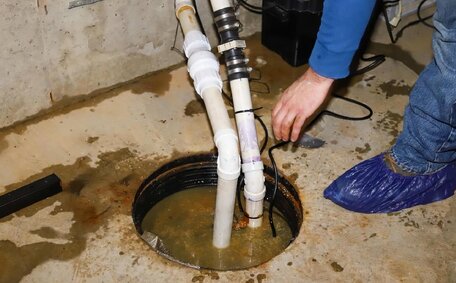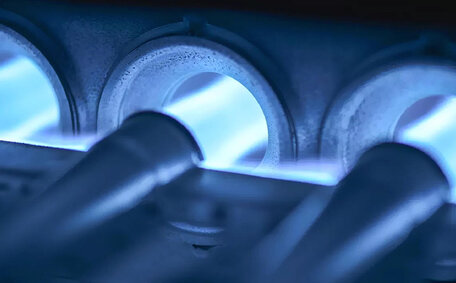Understanding Common Noises from Hot Water Systems
A quiet hot water system is a sign of good maintenance, but consistent noise may indicate problems that need addressing. Common noises and their potential causes include:
- Loud banging or hammering: Often caused by water hammer, which happens when fast-moving water is suddenly forced to stop. This can result from quick valve closure, high water pressure, or worn washers.
- Popping or cracking: Can signal sediment buildup and mineral deposits inside the tank. As elements heat up and cool to heat water, deposits can expand and contract causing popping.
- Humming or screeching: May indicate a heating element about to fail or a buildup of sediment contacting moving parts inside the tank.
- Rumbling or gurgling: Could indicate a disturbance, such as tree roots or other blockages, interfering with proper water flow.
Identifying the specific noises of your hot water heater and underlying issues permits the implementation of corrective measures, like system flushes, adjustments, or parts replacement.
Diagnosing the Source of the Noise
Check the Expansion Tank
Start by examining the expansion tank, which maintains safe water pressure levels in the system. Check for hissing air leaks or corrosion cracks. The tank may require air recharging or replacement.
Inspect the Heating Elements
After powering down, inspect the tank’s heating elements for sediment buildup or scorch damage, which could lead to popping sounds or element failure. Flush or replace elements as needed.
Assess Water Pressure and Piping
Water pipes can become noisy due to water hammer influenced by high water pressure and outdated infrastructure when your heater is quickly shut off. Install pressure relief valves, water hammer arrestors, or air chambers to manage water pressure and reduce noisy pipes. Use pipe straps to secure plumbing within your walls, ensuring stability.
Check Valves and Drain
Inspect valves for proper closure and ease of opening/closing. Ensure the TP valve on the water pipe isn’t stuck open, potentially releasing water/steam. Flush out sediment by opening the water heater’s drain valve.
Calling a water repair professional can help accurately pinpoint the noises coming from the system and remedy issues through adjustments or part replacements to stop noises and boost operational efficiency.
Sediment Buildup Causing Rumbling or Popping
Sediment and mineral deposits accumulating at the tank’s base can cause noise over time. Noise from your water heater during the heating process could indicate sediment expansion and contraction.
Neglecting sediment buildup in your water heater can result in:
- Noisy operation and disrupted hot water supply
- Reduced heating efficiency
- Element failure
- Tank corrosion
To address sediment buildup, perform a system flush as follows:
- Switch off the water heater and close the main water supply valve
- Connect a hose to the drain valve and place the other end in a bucket
- Open the drain valve and let water run until it’s clear, indicating the removal of sediment.
- Close the drain valve, refill the tank, and re-energize the system
An annual flush of your water system prevents significant sediment accumulation. Combining this maintenance with inspection of heating elements and anode rods extends the operational life of your hot water system.
If noises persist after flushing, seek professional help as components may need servicing or replacing.
Fixing Water Hammering Issues
A common issue in hot water systems, 'water hammer,' occurs when valves close quickly, causing water to stop suddenly and pressure to surge. Water hammer typically presents as a banging noise originating from hot water pipes when the flow is abruptly stopped.
To remedy water hammer:
- Install a water hammer arrestor close to the troublesome valves in your home’s plumbing system. These devices use air chambers to absorb pressure spikes.
- Modify the main shut-off valve to close gradually to reduce noise caused by sudden stopping of water flow. Quickly shutting off the water flow is typically what causes noisy water hammering during valve closure.
- Use pipe straps to secure loose pipes when reducing the risk of pipes making hammering noises.
- Consider a pressure reducing valve if excess water pressure contributes to water hammer, and seek professional assistance if the noise issue persists.
Taking these steps can muffle noisy water lines and, over time, can prevent excessive pressure spikes that strain your piping system. Routine maintenance is key - having your plumber flush your hot water system and replace outdated pipes reduces buildup and improves water flow.
Should noises persist despite DIY approaches, learn more about the sounds coming your way and identify solutions by getting in touch with our professionals, whether adding arrestors in the optimal areas, replacing fixtures causing water hammer, or performing necessary pipe repairs.
Addressing Faulty Valves or Heating Elements
If your hot water system is making high pitched screeching or squealing noises, this often signals an issue with a valve or heating element.
To inspect the valves, carefully check for corrosion, loose parts, and difficulty opening or closing. For heating elements, drain the tank and check for sediment accumulation or scorch marks signalling element failure.
Replace faulty valves and worn out elements.
Servicing valves and heating elements regularly helps prevent premature failure. Replacing worn parts can restore quiet operation and heating efficiency. Our technicians know how to fix problem areas efficiently by assessing noises and identifying specific faulty components in need of repair or replacement.
Steps to Flush and Clean the Hot Water System
When to Flush the Hot Water System
Flushing your hot water system regularly (Every 6 to 12 months) helps remove sediment and mineral buildup that can lead to noise issues and reduced efficiency. Understanding what maintenance you can do to extend the operational lifespan of your system is key.
Safety Precautions
Before flushing:
- Disconnect the power to the water heater’s top tank at the main shut off valve.
- Shut off the cold water inlet valve
- Open a nearby hot water tap, which could be one of your taps, to depressurize the system
- Check water connections, valves, and fittings for tightness
Steps to Flush the System
- Connect a garden hose to the drain valve at the heater’s bottom section.
- Route the hose down drain pathways to a suitable drainage area
- Open the drain valve slowly to help dislodge any build up and let sediment begin flowing out
- After hot water runs through the system and becomes clear, close the drain valve
- Open inlet valve to get back to refilling the tank completely, then restore power
After Flushing Care
Once finished flushing:
- Check all valves for proper closure
- Make sure all water connections are leak-free
- Verify normal system operation and hot water flow
Flushing your system yearly can prevent significant sediment buildup and solve common noises like rumbling and popping.
When to Call a Professional Plumber
While many hot water system noises can be resolved with DIY methods, some scenarios necessitate the expertise of a professional plumber:
- If noises or problems persist after thoroughly attempting suggested remedies like flushing sediment or installing water hammer arrestors
- If your water heater is over 10 years old and most likely needs full replacement due to wear
- If you encounter leaks, odd smells, or temperature inconsistencies suggesting component issues
- For gas water systems on your property affected by hard water, with any gas odours, burner issues, or venting problems
- If you lack the tools, technical skills, or ability to safely access electric water heater components or parts of the system
When issues arise, don’t hesitate to call plumber experts from Paddington Plumbing for extensive hot water system experience. For Sydney residents with noisy water heaters or operational problems, email [email protected] or call 1300 349 338 to schedule service. We can accurately diagnose issues and properly repair or replace worn parts to resolve noises and restore efficiency.
Preventative Maintenance for a Quieter System
Regular preventative maintenance is essential for ensuring your hot water system operates quietly and efficiently over time. Proactive system flushing can help you catch and address minor issues before they develop into costly repairs.
Follow this biannual maintenance checklist from our plumbing experts:
- Drain 1-2 buckets of water from the tank to remove sediment
- Inspect the heating elements and thermostat for optimal operation
- Inspect valves for corrosion and ensure proper closure
- Confirm water hammer arrestors are working effectively
- Examine pipes and fittings for any leaks or damage that could cause noise
- Monitor for conditions that could lead to noise due to water pressure and temperature variations
- Ensure the temperature and pressure relief valve (TPR valve) functions properly by testing its pressure release mechanism
- Evaluate anode rod condition
Paddington Plumbing advises installing heat trap nipples on pipes to retain heat better. Replacing old piping with modern water hammer-resistant pipes also promotes quieter function.
By spending 30 minutes twice a year on these preventative steps, a plumber should dramatically extend your hot water system’s service life and address minor issues before costly repairs are needed. Contact our team if you need assistance checking over your system.






